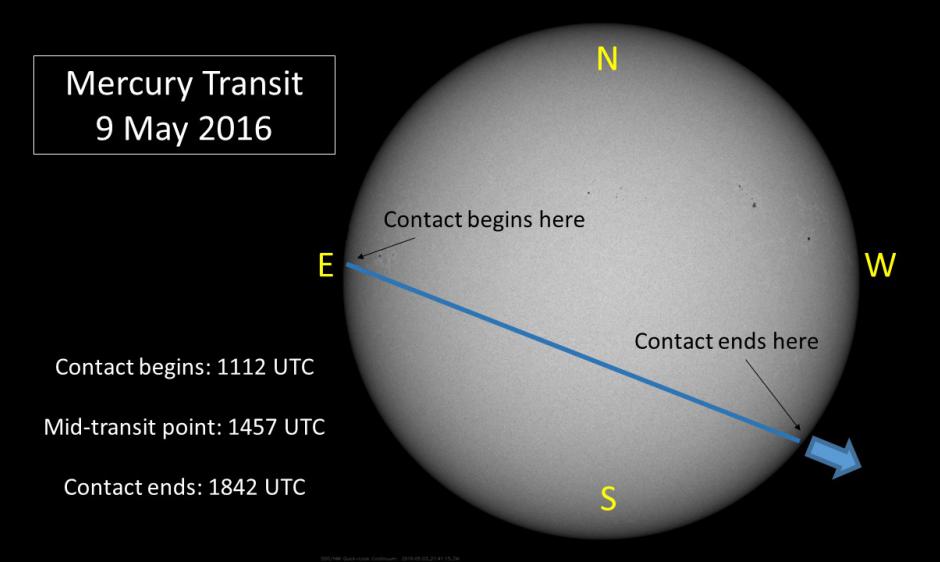
The Sun will appear to have a new, quickly moving small spot on 9 May, 2016. However, the trespasser will actually be the planet Mercury in a small portion of its orbit about 36 million miles from the Sun. This time, its orbit happens to cross the face of the Sun as seen from Earth - an event called a "transit". Mercury transits the Sun from 11:12 UTC (07:12 EDT) to 18:42 UTC (14:42 EDT). The last time Mercury transited the Sun was 2006. Its next transit won't be until 2019. Anyone interested in seeing images of this rare celestial event, can see them by monitoring NASA's specialized website that will provide imagery from NASA's Solar Dynamics Observatory (SDO), as it will be setup specifically for this transit at http://www.nasa.gov/transit
Additionally, NASA will stream live programming regarding the transit on NASA TV and on their Facebook page at www.facebook.com/NASA